–Window treatments are much more than the proverbial window dressings. The right kind of window treatments can not only uplift the entire look of your space, but can also enhance your living comfort in terms of privacy, light, ventilation, and visual appeal.
What Is Roman Shade?
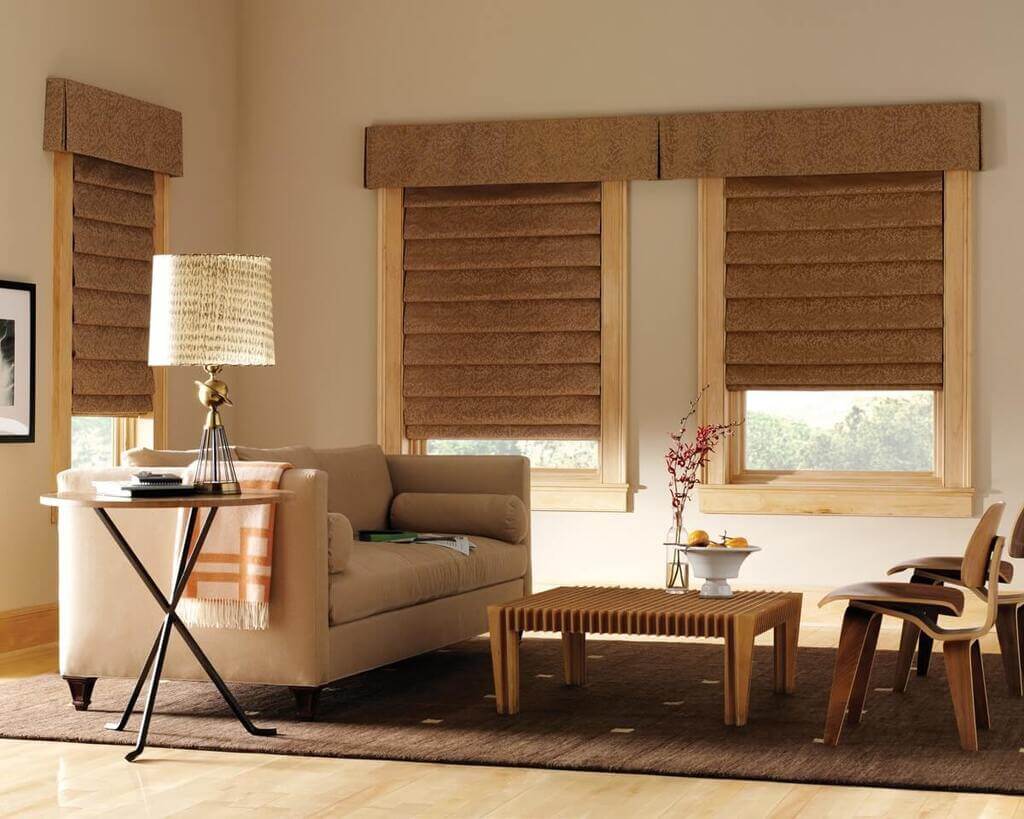
Roman shades are fabric panels fitted with slats and cords for raising and lowering. These are among the oldest window treatments (over 2000 years old!) that have evolved with time to match modern living needs.
Roman shades remain hugely popular among householders because of their good looks, high functionality, and reasonable cost.
While the appeal of roman shades remains universal, householders may find themselves struggling to choose the right kind of roman shades for their home. We bring you a simple step-by-step approach to choosing the right kind of roman shades for your home.
Step-By-Step Guide for Choosing Roman Shades for Homes
Where Do You Want Roman Shades?
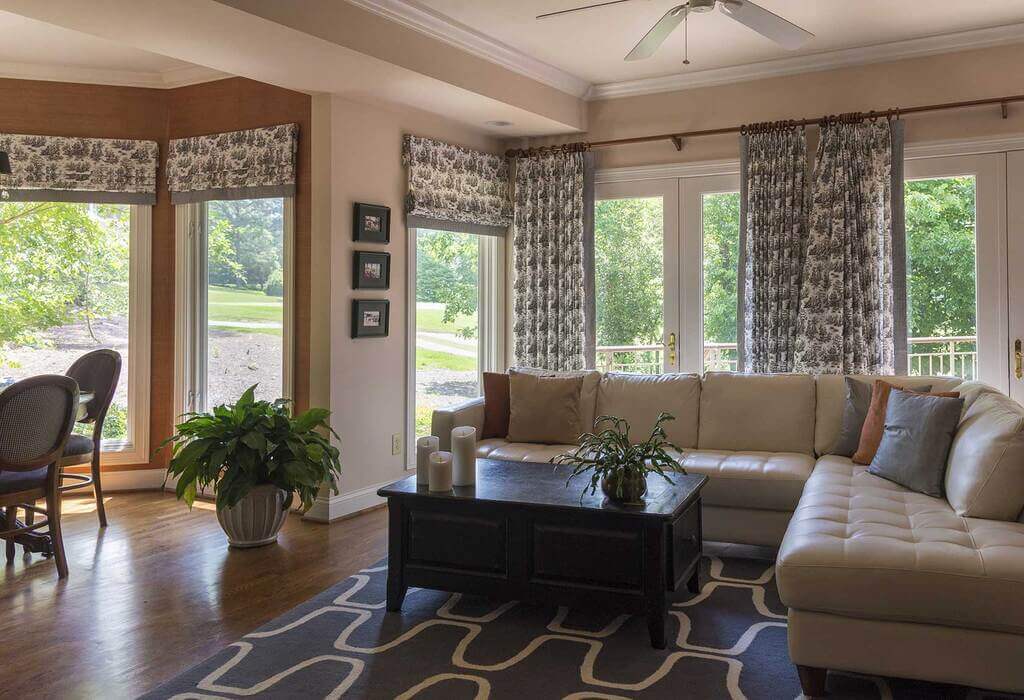
Begin by assessing what kind of window treatment will work for your home’s windows. You can choose from custom drapes, curtains, roman shades, blinds, shutters, or valances.
Roman shades work with most windows and are recommended especially for:
- odd-sized windows
- windows without stacking room on both sides
- windows set high up in the wall
- masculine décor aesthetics
- homes with small kids who can tug at curtains or playful pets who can rub against them and make the drapes dirty
- Roman shades can also be used as a layer to pair with regular drapes and curtains.
Type of Roman Shades
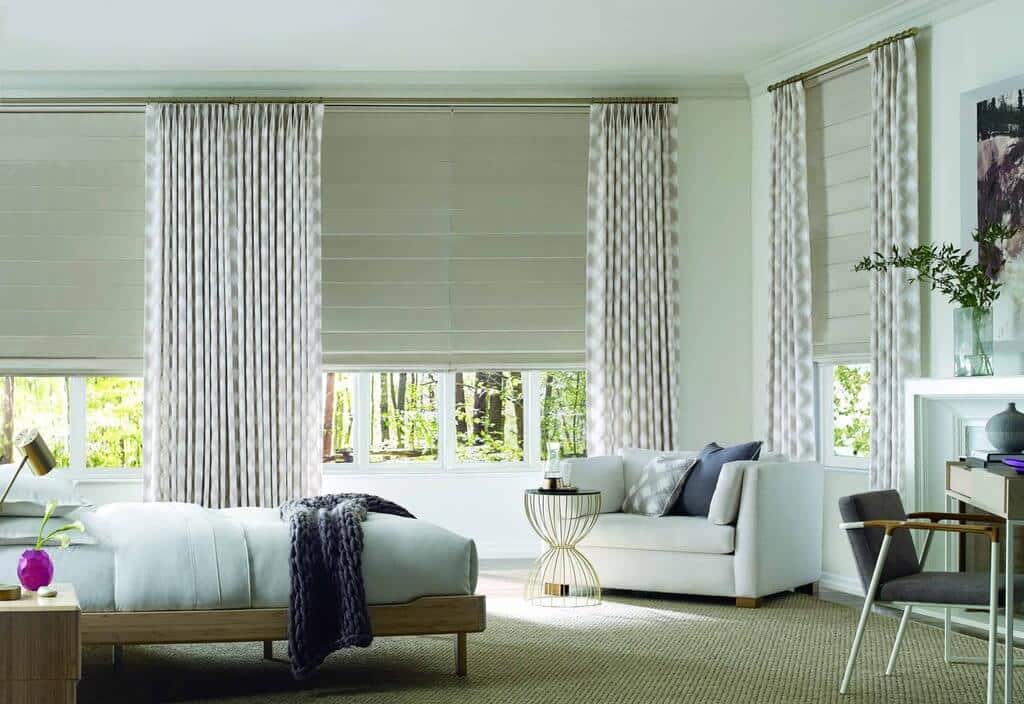
Once you decide on the windows where you want roman shades, it is time to choose the type of roman shade that you want to install on your windows.
Roman shades are offered in three popular styles: flat fold with front slats, flat fold with back slats, and European relaxed fold.
- Flat fold shades with front slats get stacked in neat pleats when raised. When lowered, the seams and the slats behind the fabric are visible. These shades work well when the shade fabric is plain and your décor is minimalist.
- Flat fold with back slats also stacks in neat pleats when raised. The only difference is that the seams and the slats don’t become visible as they are sewn in the back lining of the shade. These shades work well when the fabric has a bold print, almost like artwork.
- European fold shades fall into one gentle elegant curve. The scalloped bottom gives it a traditional, feminine look.
Determine the Mounting Position
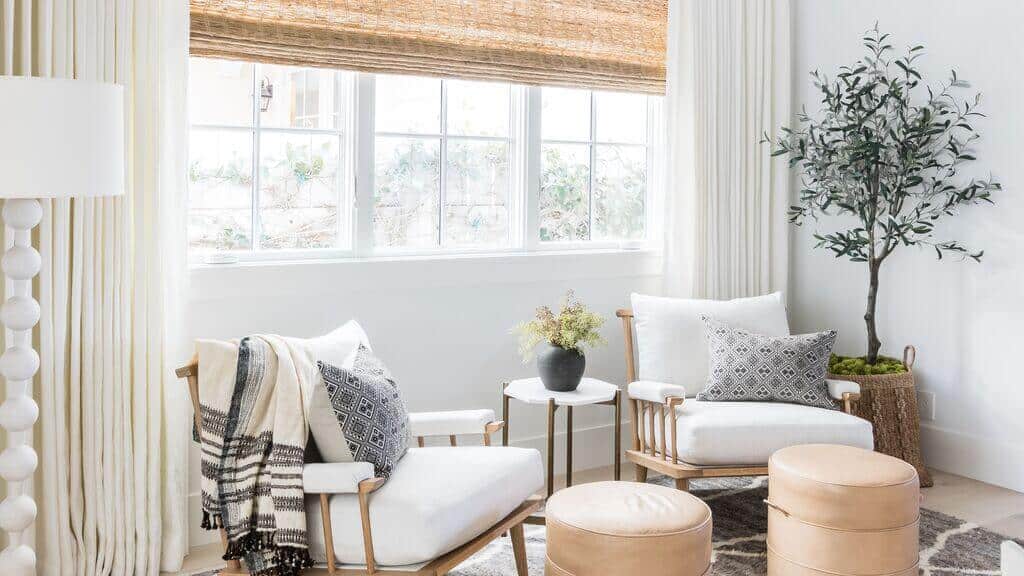
After you choose your shade type, the next step is to choose the mounting position that works with your window.
Custom roman shades can be mounted above and outside the window frame or fitted inside the window frame.
- Outside mounted roman shades are good at hiding a window’s architectural flaws as these basically cover the entire window when lowered. If mounted a few inches above the window trim, they can completely clear the window raised, giving a full view of what’s outside the window.
- One can also have shallow window recesses, which do not have the space for mounting the roman shades. So, go for these mounts if you have a window frame too shallow, or not show-worthy, or when the outside view is so magnificent that you want it to be visible as much as possible.
- Inside, mounted roman shades fit neatly within the window frame. These give a custom, tailored look, and are great for saving space. If your window frame has some pretty features, such as fine carving or marquetry work, these shades will not hide their glory.
Fabric for the Shades
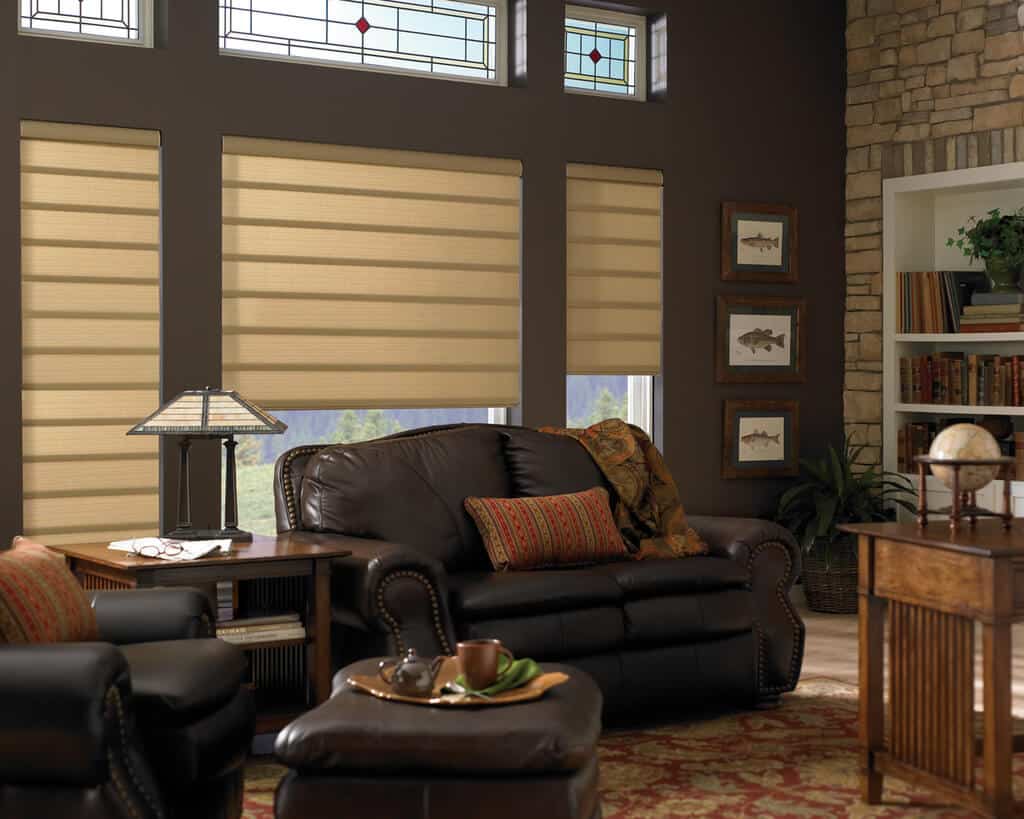
Now that you have identified the design of your windows, the shade type, and the mounting position for your roman shades, next comes choosing the right fabric for them. Roman shades can be made using most fabrics except for ones that stretch or are too stiff to pleat. So, skip those PVC, oilcloth, and lycra blends.
Instead, go for cotton and linen (lightweight, airy), sheer fabrics (light diffusers, open feeling), or velvet and suede (luxurious, traditional feel, good insulation).
Special consideration must be given to fabrics for bathroom window treatments as bathrooms are high-moisture zones; consider using poly-cot or polyester fabrics that dry quickly.
Pattern and Hues

Lastly, there are the pattern and palette decisions. These decisions depend on your personal aesthetics and décor style preference. You can begin by visualizing the roman shade in the pulled-down position to imagine how the fabric will appear along with your room walls.
Conclusion
You can go for a contrasting palette or a complementary one. Select mix patterns in your home and pair neutral walls with bold patterned shades. Or use plain or textured shades to tone down a striking wallpapered one.
For traditional rooms, you can go with flowers and paisleys. For modern rooms, stripes, color blocks, and abstract prints can add a magical touch.
Follow these five steps and your window’s shades will add to the overall grace and charm of your home.
Discover More

